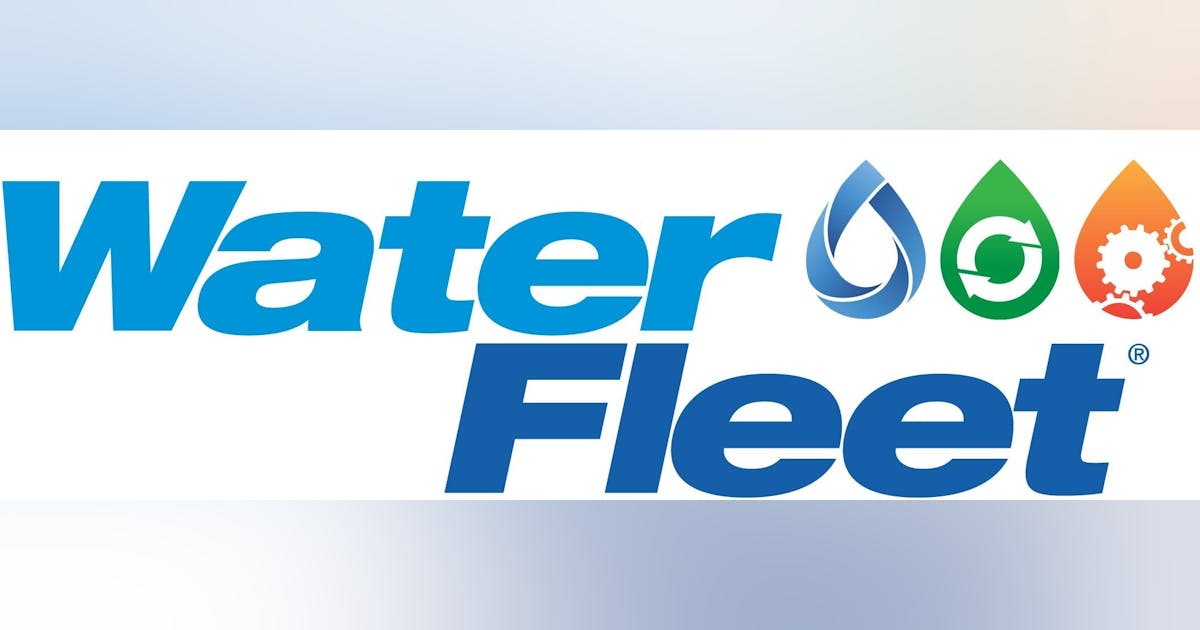WaterFleet joins Water Environment Federation, strengthening commitment to sustainable water solutions – watertechonline.com

WaterFleet Joins Water Environment Federation to Advance Sustainable Water Solutions
Introduction
SAN ANTONIO, June 24, 2025 (PRNewswire) — WaterFleet, a leader in mobile water utility solutions for remote and industrial operations, has officially become a member of the Water Environment Federation (WEF). This global organization is dedicated to preserving and enhancing the world’s water environment, aligning closely with the United Nations Sustainable Development Goals (SDGs), particularly SDG 6: Clean Water and Sanitation.
Strategic Importance of Membership
WaterFleet’s membership in WEF marks a significant advancement in its mission to revolutionize water and wastewater management in field operations. By joining this respected network of water professionals, engineers, scientists, and environmental advocates, WaterFleet commits to fostering sustainable water infrastructure solutions that support several SDGs, including:
- SDG 6: Ensure availability and sustainable management of water and sanitation for all.
- SDG 9: Build resilient infrastructure, promote inclusive and sustainable industrialization.
- SDG 12: Ensure sustainable consumption and production patterns.
- SDG 13: Take urgent action to combat climate change and its impacts.
Innovative Mobile Water Solutions
WaterFleet’s patented mobile technology addresses critical water challenges by providing:
- On-site potable water delivery: Eliminates reliance on single-use plastic bottles, reducing plastic waste and environmental pollution.
- Wastewater treatment for safe reuse: Enables sustainable water recycling, minimizing water consumption and environmental risk.
These solutions support industries such as energy, construction, and heavy industry in reducing waste, emissions, and environmental impact, directly contributing to SDG 6 and SDG 12.
Leadership Perspective
Kenneth Cockrill, CEO of WaterFleet, emphasized the company’s commitment to sustainability:
“Our systems are built to meet the water challenges of today while protecting the water resources of tomorrow. Joining WEF aligns with our belief that decentralized, mobile water treatment isn’t just more efficient—it’s essential for a cleaner, more responsible future.”
Collaboration and Knowledge Sharing
As a WEF member, WaterFleet anticipates:
- Sharing best practices in water management and technology.
- Learning from industry peers and experts.
- Contributing to the advancement of clean water innovation.
This collaboration supports SDG 17: Partnerships for the Goals, fostering global cooperation to achieve sustainable development.
About WaterFleet
WaterFleet delivers comprehensive on-site water and wastewater utility services through patented mobile systems. Designed for rugged, remote, and regulated environments, WaterFleet enables crews to operate safely and sustainably, supporting SDG 8: Decent Work and Economic Growth.
About the Water Environment Federation (WEF)
WEF is a not-for-profit technical and educational organization comprising over 30,000 individuals and 75 affiliated Member Associations worldwide. The organization is dedicated to protecting the global water environment and advancing sustainable water management practices aligned with the SDGs.
1. Sustainable Development Goals (SDGs) Addressed or Connected
- SDG 6: Clean Water and Sanitation
- The article focuses on water and wastewater management, emphasizing sustainable water infrastructure and safe reuse of wastewater.
- SDG 12: Responsible Consumption and Production
- WaterFleet’s replacement of single-use plastic bottles with on-site potable water delivery addresses waste reduction and sustainable consumption.
- SDG 9: Industry, Innovation, and Infrastructure
- The development and deployment of mobile water utility solutions represent innovation in infrastructure for remote and industrial operations.
- SDG 13: Climate Action
- Reducing emissions and environmental risk through efficient water management contributes to climate action goals.
2. Specific Targets Under Those SDGs Identified
- SDG 6 Targets
- 6.3: Improve water quality by reducing pollution, minimizing release of hazardous chemicals and materials, and increasing recycling and safe reuse.
- 6.4: Increase water-use efficiency across all sectors to ensure sustainable withdrawals and supply of freshwater.
- 6.5: Implement integrated water resources management at all levels.
- SDG 12 Targets
- 12.5: Substantially reduce waste generation through prevention, reduction, recycling, and reuse.
- SDG 9 Targets
- 9.4: Upgrade infrastructure and retrofit industries to make them sustainable, with increased resource-use efficiency and greater adoption of clean and environmentally sound technologies.
- SDG 13 Targets
- 13.1: Strengthen resilience and adaptive capacity to climate-related hazards and natural disasters.
3. Indicators Mentioned or Implied to Measure Progress
- For SDG 6
- 6.3.1: Proportion of wastewater safely treated – implied by WaterFleet’s wastewater treatment and safe reuse systems.
- 6.4.1: Change in water-use efficiency over time – implied through WaterFleet’s efficient water management in remote and industrial operations.
- For SDG 12
- 12.5.1: National recycling rate, tons of material recycled – implied by the reduction of single-use plastic bottles and waste.
- For SDG 9
- 9.4.1: CO2 emission per unit of value added – implied through reduction of emissions by using mobile water treatment technology.
- For SDG 13
- 13.1.1: Number of deaths, missing persons and directly affected persons attributed to disasters – indirectly addressed by reducing environmental risks.
4. Table of SDGs, Targets, and Indicators
| SDGs | Targets | Indicators |
|---|---|---|
| SDG 6: Clean Water and Sanitation |
|
|
| SDG 12: Responsible Consumption and Production |
|
|
| SDG 9: Industry, Innovation, and Infrastructure |
|
|
| SDG 13: Climate Action |
|
|
Source: watertechonline.com








